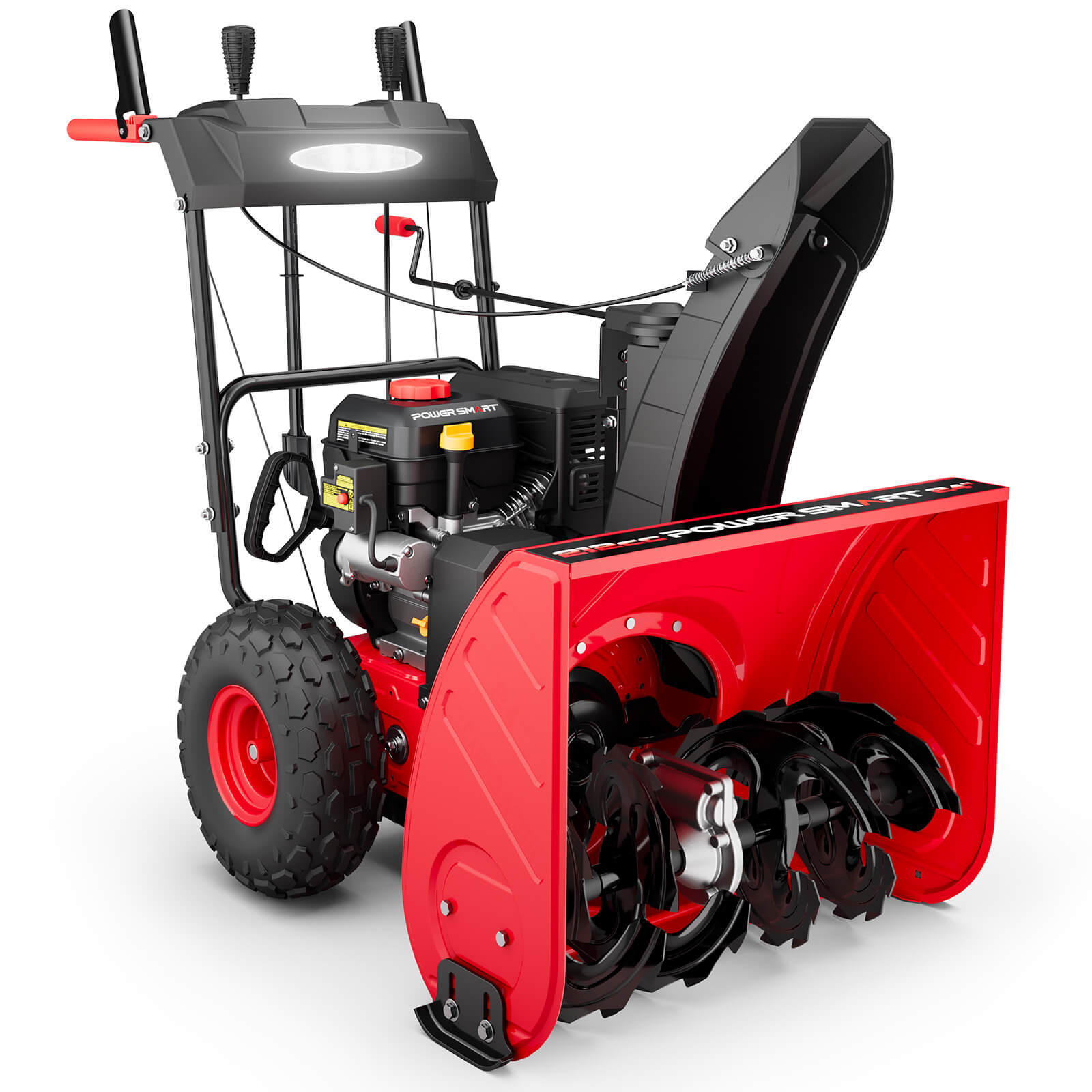Why Regular Oil Changes Are Crucial for Your Gas Lawn Mower
Regularly changing the oil in a gas lawn mower is crucial for its upkeep. Fresh oil plays a key role in ensuring the engine runs smoothly and efficiently by reducing friction and wear. Over time, oil gets contaminated with dirt, debris, and combustion by-products, which diminishes its ability to lubricate effectively and puts the mower's engine at risk. By consistently replacing the oil, you can prolong the life of your machine and improve its performance.
Benefits of Regular Oil Changes
Regular oil changes provide multiple benefits. They help in cooling engine parts by reducing excess heat and keeping moving parts well-lubricated, which minimizes wear and tear. Fresh oil also improves engine efficiency, enabling your gas lawn mower to run more smoothly and reducing fuel consumption. Furthermore, clean oil prevents the buildup of harmful deposits, ensuring the internals of your mower remain in good condition over time.
Potential Risks of Skipping Oil Changes
Skipping oil changes can lead to serious risks for your gas lawn mower. Old and dirty oil loses its lubricating properties, which increases friction and can cause the engine to overheat. This condition accelerates the wear and tear on engine parts, leading to potential breakdowns and costly repairs. Ignoring regular oil changes can even result in complete engine failure, rendering your lawn mower useless and necessitating a considerable investment in repairs or replacement.
Tools and Materials You’ll Need
To successfully change the oil in your gas lawn mower, you'll need to gather some essential tools and materials. Having everything ready ahead of time will streamline the process and ensure you don't run into any unforeseen issues.
Recommended Tools
Start by gathering the right tools. A wrench or socket set is essential for removing the oil drain plug. To avoid spills, use an oil pan or container to catch the old oil as it drains. Additionally, have an oil filter wrench available if your mower has an oil filter that requires replacement during this process. Using a funnel will also help in adding new oil without creating a mess.
Necessary Materials
As for materials, you will need the correct type and amount of oil recommended for your gas lawn mower. Make sure to check your mower's owner's manual for these specifications. You'll also need a new oil filter if your mower uses one. Rags or paper towels will be useful for wiping up any spills and cleaning around the oil cap and filter area. Lastly, it’s good practice to have a pair of gloves to keep your hands clean and safe.
Preparing Your Gas Lawn Mower for an Oil Change
Before you begin changing the oil, it's essential to adequately prepare your gas lawn mower to ensure a smooth and safe process. Taking a few precautionary steps can prevent accidents and make the oil change more efficient.
Safety Precautions to Take
Start by ensuring your mower is on a flat, stable surface and turn off the engine. Allow the engine to cool down if it has been running; hot oil can cause burns. Disconnect the spark plug to prevent any accidental starts. Also, wear gloves and safety goggles to protect your hands and eyes from oil splashes and debris.
Pre-Oil Change Inspection
Conducting a brief inspection prior to an oil change can be advantageous. Look for any noticeable leaks or damage around the engine area. Examine the oil cap and drain plug, making sure they are in good condition and free of debris. Take note of any additional issues that might need attention, such as a dirty air filter or the need for blade sharpening, while you have your tools and equipment ready.
Draining the Old Oil from Your Gas Lawn Mower
Draining the old oil is a critical step in the oil change process. Whether your gas lawn mower has an oil drain plug or requires an oil extraction pump, follow these guidelines for a clean and efficient drain.
Locating the Oil Drain Plug
Locate the oil drain plug on the engine. The drain plug is typically found on the underside of the mower and may require tilting the mower slightly to access it. Refer to your owner's manual for the exact location.
Steps to Safely Drain the Old Oil
Place an oil pan beneath the drain plug to catch the old oil. Using the appropriate wrench, carefully unscrew the drain plug. Allow the oil to drain completely into the oil pan. This process may take a few minutes. Once the oil has drained, replace the drain plug and tighten it securely, ensuring there are no leaks.
Alternative Method: Using an Oil Extraction Pump
If your gas lawn mower lacks a drain plug or you prefer not to tilt the mower, an oil extraction pump serves as a great option. Place the pump's tube into the oil fill hole and extract the old oil into a container. This approach is tidier and minimizes spill risks.
Adding New Oil to Your Gas Lawn Mower
Now that the old oil has been drained, it's time to add fresh oil to your gas lawn mower. Choosing the correct type of oil and following proper procedures ensures optimal performance.
Choosing the Right Type of Oil
Selecting the right type of oil is crucial. PowerSmart's recommended engine oils are generally safe bets, but always consult your lawn mower’s owner's manual for the specific oil type and capacity. Typically, SAE 30 oil is used for warmer temperatures, while 10W-30 can be suitable for a wider range of conditions.
Step-by-Step Instructions to Add New Oil
First, make sure the oil drain plug is firmly tightened. Using a clean funnel, pour the specified type and amount of new oil into the oil fill hole. Use the dipstick to check the level, ensuring you do not overfill. Once you've added the oil, securely put the oil cap back on. Finally, reconnect the spark plug and start the engine so that the new oil can circulate. Check for any leaks and observe the mower's performance.
Following these steps ensures your gas lawn mower remains in excellent condition, delivering reliable performance throughout the mowing season. Regular maintenance like oil changes is a small investment that offers great returns in terms of longevity and efficiency of your lawn care equipment.
Post-Oil Change Maintenance Tips
How to Properly Dispose of Used Oil
Properly disposing of the used oil from your gas lawn mower is crucial for protecting the environment. Pour the used oil into a clean, sealable container and take it to a local recycling center or automotive store that accepts used oil. Never pour it down the drain, into the trash, or on the ground, as this can contaminate soil and water sources. Many municipalities offer environmentally friendly disposal options, such as collection programs and designated drop-off sites, to ensure used oil is recycled responsibly.
Checking the Oil Level After Changing
After adding the new oil, it’s essential to check the oil level to avoid any potential issues. Start the mower and let it run for a few minutes to allow the new oil to circulate throughout the engine. Turn off the mower and let it sit for a couple of minutes. Then, use the dipstick to check the oil level. Ensure the oil is within the marked range on the dipstick. If necessary, add a small amount of oil and recheck until the proper level is achieved. This step ensures your gas lawn mower operates efficiently and prevents engine damage.
Common Mistakes to Avoid During an Oil Change
Overfilling or Underfilling Oil Levels
A frequent error involves either overfilling or underfilling the oil level. Both conditions can create serious problems for your gas lawn mower. Overfilling may result in excessive pressure, which can cause oil leaks and potential damage to the engine. Conversely, underfilling might fail to provide sufficient lubrication, leading to increased friction and wear on engine parts. Always adhere to the manufacturer's recommendations and use the dipstick to verify that the oil level is accurate.
Forgetting to Replace the Oil Filter
Forgetting to replace the oil filter is another mistake that can interfere with your mower’s performance. A new oil filter is essential for trapping contaminants and providing clean oil to the engine. Neglecting this step can result in old, dirty oil being circulated back into the engine, defeating the purpose of the oil change. Make it a habit to include an oil filter replacement in your maintenance routine, if applicable, to keep your gas lawn mower running smoothly.
PowerSmart: A Reliable Choice for Your Lawn Care Needs
Overview of PowerSmart's Products and Services
PowerSmart is known for providing high-quality lawn care equipment, making it a reliable choice for homeowners. The company offers a wide range of products designed to meet various yard maintenance needs. From gas lawn mowers to snow blowers, PowerSmart’s equipment is built to last and deliver superior performance. Their commitment to innovation and quality ensures that users get the best value and functionality from their products.
Introducing PowerSmart’s Gas Lawn Mowers
PowerSmart’s gas lawn mowers are engineered for efficiency and durability. They come in various models tailored to different yard sizes and terrain types. Features such as adjustable cutting heights, easy start mechanisms, and robust engine power make these mowers a popular choice among homeowners. The design focuses on user convenience, enabling easy maneuverability and minimal maintenance requirements.
Key Features and Benefits of PowerSmart Equipment
PowerSmart equipment offers several notable features, such as high-performance engines, durable construction, and user-friendly controls. The gas lawn mowers come with powerful engines that deliver dependable performance, even in dense grass and tough conditions. The adjustable cutting heights allow users to tailor the mower to their lawn's specific needs. Furthermore, the easy start mechanism guarantees smooth operation, while the sturdy construction ensures longevity and durability, establishing PowerSmart as a reliable brand for lawn care.
FAQs About Changing Oil in a Gas Lawn Mower
How Often Should You Change the Oil?
The frequency of oil changes for your gas lawn mower depends on the manufacturer’s recommendations and your usage. As a general guideline, it's advisable to change the oil at least once every mowing season or every 50 hours of operation, whichever comes first. Frequent use and harsh conditions might necessitate more frequent changes. Always refer to your mower's owner’s manual for specific maintenance intervals to ensure optimal performance and longevity.
What Happens If You Don’t Change the Oil?
Neglecting to change the oil in your gas lawn mower can lead to several adverse consequences. Dirty, old oil loses its lubricating properties, causing increased friction and overheating within the engine. This can accelerate wear and tear on critical engine components, decrease efficiency, and potentially lead to engine failure. Regular oil changes are essential to keep your mower running smoothly, prolong its lifespan, and avoid costly repairs.
Final Thoughts on Maintaining Your Gas Lawn Mower
Maintaining your gas lawn mower through regular oil changes is vital for ensuring its efficiency, reliability, and lifespan. Following a systematic approach to changing the oil, including proper disposal of used oil and staying vigilant about oil levels, can prevent common mistakes and potential engine damage. Whether you're using a PowerSmart gas lawn mower or another brand, adopting a diligent maintenance routine will help you achieve a well-maintained lawn with ease and minimal downtime. Regular upkeep is a small investment that pays off significantly by keeping your equipment in peak condition, providing you with years of dependable service.







Leave a comment
All comments are moderated before being published.
This site is protected by hCaptcha and the hCaptcha Privacy Policy and Terms of Service apply.